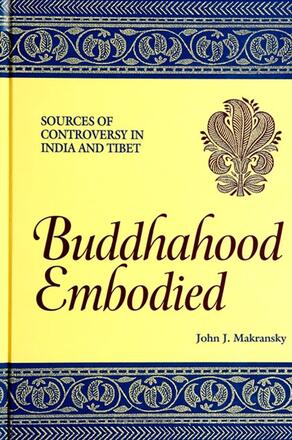
Buddhahood Embodied
Sources of Controversy in India and Tibet
Alternative formats available from:
Provides many new translations of original texts formative of Mahayana concepts of Enlightenment and resolves the 1200-year-old controversy between Indian and Tibetan views of the meaning of buddhahood.
Description
To enter the Mahayana Buddhist path to enlightenment is to seek both to become free from our dualistic, deluded world and to remain actively engaged in that world until all others are free. How are these two apparently contradictory qualities to be embodied in the attainment of buddhahood (dharmakaya)? How can one's present practice accomplish that? These questions underlie a millennium-old controversy over buddhahood in India and Tibet that centers around a cherished text, the Abhisamayalamkara. Makransky shows how the Abhisamayalamkara's composite redaction, from Abhidharma, Prajnaparamita, and Yogacara traditions, permitted its interpreters to perceive different aspects of those traditions as central in its teaching of buddhahood. This enabled Indians and Tibetans to read very different perspectives on enlightenment into the Abhisamayalamkara, through which they responded to the questions in startlingly different ways.
The author shows how these perspectives provide alternative ways to resolve a logical tension at the heart of Mahayana thought, inscribed in the doctrine that buddhahood paradoxically transcends and engages our world simultaneously. Revealing this tension as the basis of the Abhisamayalamkara controversy, Makransky shows its connection to many other Indo-Tibetan controversies revolving around the same tension: disagreements over buddhahood's knowledge, embodiment, and accessibility to beings (in Buddha nature and through the path). Tracing the source of tension to early Mahayana practice intuitions about enlightenment, the author argues that different perspectives in these controversies express different ways of prioritizing those practice intuitions.
John J. Makransky is Assistant Professor of Buddhist Studies and Comparative Theology at Boston College.
Reviews
"This is first-rate Buddhist scholarship, ranging over many centuries, dozens of texts, and two cultures, while never losing its focus on the crucial philological and doctrinal issues that animate it. It is intellectual history of a high order, the product of careful detective work, in which subtle leads and nuanced arguments are tracked and traced with linguistic skill and methodological sophistication in a convincing attempt to expose larger patterns of development. It significantly advances our understanding of a crucial, yet surprisingly under-studied area of Mahayana Buddhism--the doctrine of buddhahood--in the process clearing away a great deal of cant and cliche that long has been uncritically accepted and perpetuated. It also illuminates the history, relation and (sometimes) authorship of a number of central Mahayana texts, including the Prajnaparamita sutras and the great treatises of the Yogacara tradition. Finally, it is written with remarkable clarity and force--for all its subtlety and complexity, the reader virtually always knows where the discussion has been, where it stands, and where it is headed. " -- Roger Jackson, Carleton College